Filter by
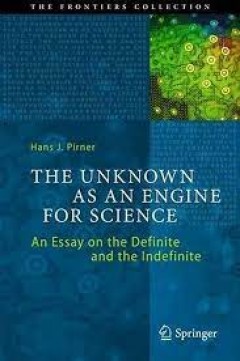
The Unknown as an Engine for Science An Essay on the Definite and the Indefi…
This book explores the limits of our knowledge. The author shows how uncertainty and indefiniteness not only define the borders confining our understanding, but how they feed into the process of discovery and help to push back these borders. Starting with physics the author collects examples from economics, neurophysiology, history, ecology and philosophy. The first part shows how informatio…
- Edition
- -
- ISBN/ISSN
- 978-3-319-18509-5
- Collation
- -
- Series Title
- -
- Call Number
- -
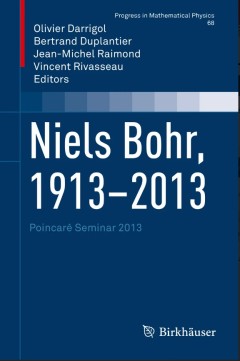
Niels Bohr, 1913-2013
This fourteenth volume in the Poincaré Seminar Series is devoted to Niels Bohr, his foundational contributions to understanding atomic structure and quantum theory and their continuing importance today. This book contains the following chapters: - Tomas Bohr, Keeping Things Open; - Olivier Darrigol, Bohr's Trilogy of 1913; -John Heilbron, The Mind that Created the Bohr Atom; - Serge Haroche & …
- Edition
- 1
- ISBN/ISSN
- 978-3-319-14315-6
- Collation
- XIII, 221
- Series Title
- Progress in Mathematical Physics
- Call Number
- -
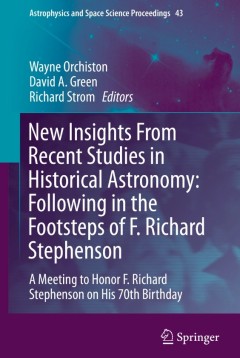
New Insights From Recent Studies in Historical Astronomy: Following in the Fo…
This book contains papers from a conference held to celebrate the 70th birthday of one of the world’s foremost astronomical historians, Professor F. Richard Stephenson, the latest recipient of the American Astronomical Society’s highest award for research in astronomical history, the LeRoy Doggett Prize. Reflecting Professor Stephenson’s extensive research portfolio, this book brings toge…
- Edition
- 1
- ISBN/ISSN
- 978-3-319-07613-3
- Collation
- XXX, 350
- Series Title
- Astrophysics and Space Science Proceedings
- Call Number
- -
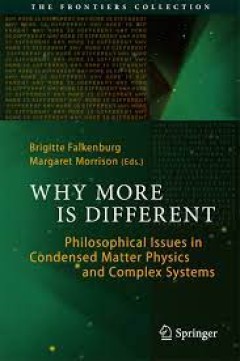
Why More Is Different Philosophical Issues in Condensed Matter Physics and C…
The physics of condensed matter, in contrast to quantum physics or cosmology, is not traditionally associated with deep philosophical questions. However, as science - largely thanks to more powerful computers - becomes capable of analysing and modelling ever more complex many-body systems, basic questions of philosophical relevance arise. Questions about the emergence of structure, the nature o…
- Edition
- -
- ISBN/ISSN
- 978-3-662-43911-1
- Collation
- X, 280
- Series Title
- -
- Call Number
- -
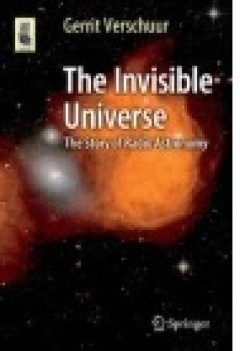
The Invisible Universe
This is the story of radio astronomy, of how radio waves are generated by stars, supernova, quasars, colliding galaxies and by the very beginnings of the universe itself. The author discusses what radio astronomers are doing in the New Mexico desert, in a remote valley in Puerto Rico, and in the green Pocahontas Valley in West Virginia, as well as dozens of other remote sites around the world. …
- Edition
- -
- ISBN/ISSN
- 978-3-319-13422-2
- Collation
- XII, 259
- Series Title
- Astronomers' Universe
- Call Number
- -

Universe Unveiled The Cosmos in My Bubble Bath
The bubbles were swirling all around me, massaging my body. As I luxuriated in this fantastic bath, I gasped realizing that those bubbles carried with them miniature galaxies bringing the entire Cosmos into my bathtub... Alfie is back. And so are George and other characters from the author’s previous book Einstein’s Enigma or Black Holes in My Bubble Bath. While the present book, Univers…
- Edition
- -
- ISBN/ISSN
- 978-3-319-08213-4
- Collation
- 34 b/w illustrations
- Series Title
- -
- Call Number
- -

The Formalisms of Quantum Mechanics
Quantum mechanics is probably the most successful physical theory ever proposed and despite huge experimental and technical progresses in over almost a century, it has never been seriously challenged by experiments. In addition, quantum information science ha s become an important and very active field in recent decades, further enriching the many facets of quantum physics. Yet, there is a s…
- Edition
- -
- ISBN/ISSN
- 978-3-319-10539-0
- Collation
- VII, 157
- Series Title
- Lecture Notes in Physics
- Call Number
- -
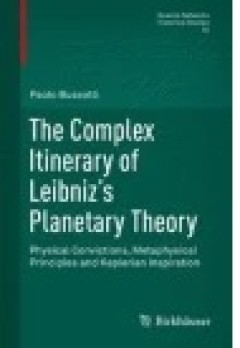
The Complex Itinerary of Leibniz’s Planetary Theory
This book presents new insights into Leibniz’s research on planetary theory and his system of pre-established harmony. Although some aspects of this theory have been explored in the literature, others are less well known. In particular, the book offers new contributions on the connection between the planetary theory and the theory of gravitation. It also provides an in-depth discussion of Kep…
- Edition
- -
- ISBN/ISSN
- 978-3-319-21236-4
- Collation
- X, 188
- Series Title
- Science Networks. Historical Studies
- Call Number
- -

Jacobus Cornelius Kapteyn: Born Investigator of the Heavens
Jacobus C. Kapteyn (1851-1922) was a Dutch astronomer who contributed heavily to major catalogs of star positions, such as the Cape Photographic Durchmusterung and the Harvard-Groningen Durchmusterung, and arranged extensive international collaboration through his Plan of Selected Areas. He contributed to the establishment of statistical astronomy and structure and dynamics of the Sidereal Syst…
- Edition
- -
- ISBN/ISSN
- 978-3-319-10876-6
- Collation
- -
- Series Title
- -
- Call Number
- -

Essays on the History of Mechanical Engineering
This book treats several subjects from the History of Mechanism and Machine Science, and also contains an illustrative presentation of the Museum of Engines and Mechanisms of the University of Palermo, Italy, which houses a collection of various pieces of machinery from the last 150 years. The various sections deal with some eminent scientists of the past, with the history of industrial inst…
- Edition
- -
- ISBN/ISSN
- 978-3-319-22680-4
- Collation
- 142 b/w illustrations, 180 illustrations in colour
- Series Title
- -
- Call Number
- -
 Computer Science, Information & General Works
Computer Science, Information & General Works  Philosophy & Psychology
Philosophy & Psychology  Religion
Religion  Social Sciences
Social Sciences  Language
Language  Pure Science
Pure Science  Applied Sciences
Applied Sciences  Art & Recreation
Art & Recreation  Literature
Literature  History & Geography
History & Geography